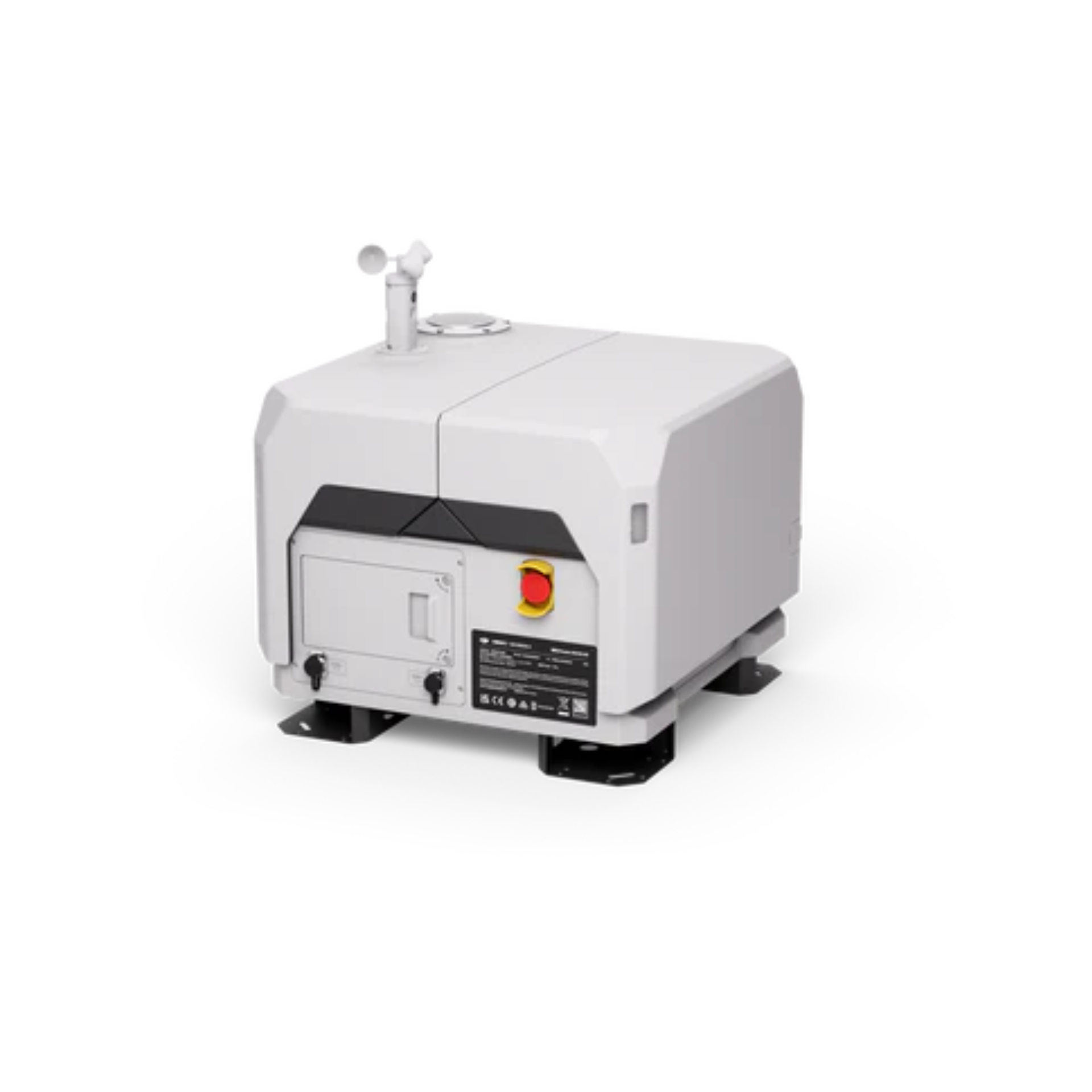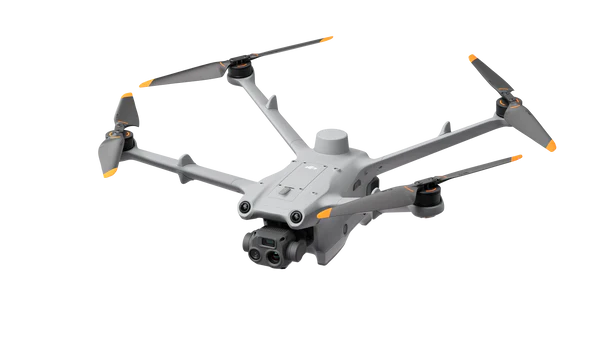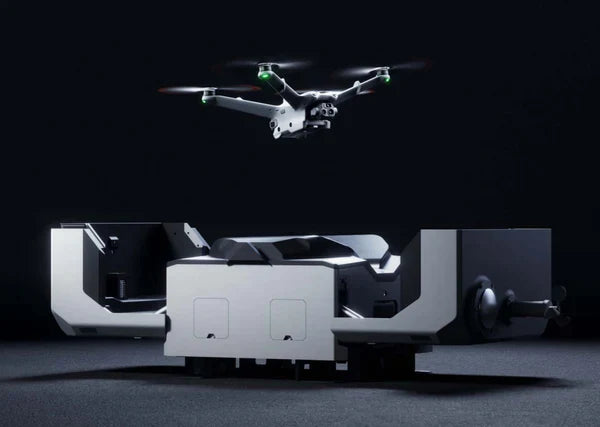DJI DOCK 2
Easy Operation, Superior Results
The more capable yet noticeably smaller DJI Dock 2 deploys Matrice 3D or 3TD drones with ease and security. Dock 2 is lightweight, offers high-level operation capabilities, and has cloud-based intelligent functions that bring efficiency and quality to automatic operations.

Lightweight and Easy
to Deploy

P55 Ingress Protection[1]

10km Max Effective Operating Radius[2]

Integrated Environmental Monitoring System

Cloud-Based Modeling

FlyTo Tasks

Private Deployment

Third-Party Payload Support[3]

Lightweight Design
DJI Dock 2 is 75% smaller and 68% lighter than its predecessor and is easily transportable with just two individuals, which makes for flexible installation and reduces installation costs.

Built-In Backup Battery
In the case of an unexpected power outage, DJI Dock 2 can continue to operate independently for over five hours[6]with the built-in backup battery, leaving sufficient time for the aircraft to return and land.

Six-Month Maintenance Interval
With its high level of protection and reliability, DJI Dock 2 only requires maintenance approximately every six months,[7]effectively controlling human resource costs.

Abnormal Condition Notifications
If DJI Dock 2 and the aircraft encounter task failures or emergencies, DJI FlightHub 2 will immediately send email notifications. This allows operators to accurately trace and troubleshoot problems based on the provided information.

High-Performance Aircraft Models
The all-new DJI Matrice 3D/3TD is specifically designed for DJIDock 2.Matrice 3D is equipped with both a tele camera and awide-anglecamera with a mechanical shutter, meeting the needs for 1:500 high-precision mapping tasks. Matrice 3TD, outfitted with a wide-angle camera, a tele camera, and an infrared camera, can depict both visible light and thermal images, making it suitable for security and inspection operations.

Cloud-Based Operation, Maximum Control
After the aircraft completes its flight task, DJI FlightHub 2 generates high-precision 3D models based on the collected flight data, authentically restoring the operating environment. These models can be annotated, measured, and downloaded.







DJI
DJI Dock 2
* Always check and strictly abide by local laws and regulations before flying.
** All data on this page was collected using a production model DJI Dock 2 and DJI Matrice 3D/3TD in a controlled environment. Actual results may vary depending on the environment, usage, and firmware version.
*** All videos and images on this page were shot in strict compliance with relevant local laws and regulations.
**** DJI Matrice 3D/3TD must be activated via the DJI Pilot 2 app before use.
***** To ensure that the equipment operates steadily and continuously, please perform regular maintenance. For details, refer to the Maintenance Manual.
1.DJI Dock 2 is IP55 rated, and DJI Matrice 3D/3TD is IP54 rated. Both are tested under controlled laboratory conditions. The IP rating is not permanently effective and may decrease due to product wear and tear. For details, refer to the User Manual.
2.Measured in an environment of approximately 25°C (77°F) with a reserve battery level of 25%, ambient wind speed of approximately 4 m/s, round-trip flight speed of approximately 15 m/s, and hovering operation of 10 minutes. This value is for reference only, and the actual operation data may vary.
3. Sold separately.
4.DJI Matrice 3D/3TD or the DJI Mavic 3 Enterprise Series aircraft can be used.
5.When the aircraft has sufficient battery level, the following operations can be completed in 12 minutes: Turn on the DJI Matrice 3D Series drone and connect it to the DJI RC Pro Enterprise. Enter DJI Pilot 2, select the Dock Site Evaluation function, and then finish the site evaluation step by step according to the instructions until the evaluation results are obtained. This value is for reference only, and the actual experience may vary.
6.Measured with a fully charged backup battery in a 25°C (77°F) environment. After a power outage, the dock does not support functions like aircraft charging, air conditioning, dock cover heating, and wind speed gauge heating. Always check malfunctions promptly.
7.Measured in a windless, sand-free, and non-erosive environment at 25°C (77°F). Actual maintenance intervals should be determined based on the deployment environment and operating frequency. It is recommended to conduct maintenance every six months or sooner.
8.Measured in a controlled test environment. Specific test conditions are as follows: flying forward at a constant speed of 46.8 kph in a windless laboratory environment at 20 meters above sea level, in photo mode (without photo-taking operation during flight), with Obstacle Avoidance Action set to Off, and from 100% battery level until 0%. Results may vary depending on the environment, actual use, and firmware version.
9.The aircraft has a 10° blind spot in the upper rear area. Always fly with caution.
10.Within 12 months, when the ambient temperature for battery storage is below 35°C (95°F), and the cumulative time with a battery level of 90% or higher is less than 120 days, the battery cycles can reach 400 times.
11.In an environment with good network signals, it takes approximately 45 seconds, the fastest from when the operator clicks Take Off in DJI FlightHub 2 to when the aircraft leaves the landing pad. This value is for reference only, and the actual experience may vary.
12.Measured in a 25°C (77°F) environment while charging.
13.Please consult your dealer first to ensure that the payload is compatible with DJI FlightHub 2.

